- Home
- Gerald Durrell
The New Noah Page 2
The New Noah Read online
Page 2
For the first two or three days he was very savage and would attack the bars of the cage whenever I went near. But after a while in captivity he grew quite tame and within two or three weeks would even come and take food from my hand, or let me scratch him behind his ears.
In the mountains of the Cameroons the thick forest gives way to rolling mountain grassland, and in this sort of country I had to use other methods of capturing animals, one of the best of which was to drive the creatures into nets.
It was to this grassland territory that I went to capture the giant booming squirrel, the biggest squirrel found in the Cameroons, an animal about twice the size of the ordinary English grey squirrel. These squirrels are found also in the lowlands, but there they spend their time in the top branches of the very tallest trees, feeding on the fruit and nuts that grow up there, and very rarely coming down to the ground. This makes it almost impossible to catch them. In the grasslands, however, they live in the small strips of forests that border the stream and in the early morning and evening they would come down and venture out into the grass fields in search of food. My hunters had told me they knew of a section of forest land where these squirrels were plentiful, and I decided that we would try to catch them in the early morning when they came down into the grass to feed.
We set off about one o’clock in the morning and arrived at the place just before dawn. A suitable spot was chosen in the grass at the edge of the forest and there we spread our nets in a half-moon, camouflaging them with grass and bushes. We had to do this while it was dark, and we had to be very quiet about it, so that the squirrels would not know we were there. Then, the nets being ready, we went and hid under some large bushes at the very edge of the strip of forest and waited there, drenched with dew, until the dawn broke. In the mountains the climate is much colder than in the lowlands, and so by the time the sun rose we were frozen and our teeth were chattering with cold.
Presently, as the morning mist swirled about us in great white clouds, we heard some loud angry ‘chuckchuck’ noises echoing from the trees around us, and the hunters whispered that this meant the squirrels were preparing to come down for their breakfast. Soon, peering through the leaves towards the part of the grass fields where our nets were concealed, I saw a strange object bobbing up and down. It looked exactly like a long black and white balloon, and I could not for the life of me think what it could be. I pointed it out to the hunters and they explained that it was a squirrel’s tail bobbing up and down above the grass stalks while its body was hidden from view. Very soon this solitary ‘balloon’ was joined by several others, and as the mist rose we could see the squirrels themselves hopping cautiously from tussock to tussock, sitting up on their great black and white striped tails.
When we judged that they were far enough away from the trees, we rose from our cramped positions and spread out in a line. Then I gave the signal and we all walked slowly out into the grass field. Our appearance was greeted with a chorus of loud frightened chucking noises from the squirrels in the trees behind us. The ones in the grass field, however, just sat and stared at us suspiciously. Our plans to walk forward, driving the squirrels farther and farther away from the trees and slowly to the nets, and then, once they were within the circle of the nets, suddenly to charge down and stampede them, so that in their panic they would run into the mesh before they saw us, did not, however, work out quite the way we expected.
One of the squirrels, more cunning than the rest, suddenly realized that we were driving him away from the sanctuary of the tall trees, and so he broke away to the left, skirted round the line of hunters and raced back into the forest. The other squirrels sat and watched, obviously undecided as to whether or not they should follow him. They were not quite within the circle of the nets, but I felt that if we did not charge them they would all break away and get round us as the first squirrel had done. So we all charged forward, shouting and yelling and waving our arms, trying to appear as frightening as possible. The squirrels took one look at us and turned and fled.
Two of them broke away to the left and right, and three others ran straight into the net and within a few seconds were struggling helplessly in the mesh. It was an extremely difficult job to disentangle them, for they uttered loud snarling grunts of rage and bit savagely at our hands with their orange-coloured teeth. They were quite handsome animals, with russet-red upper parts, lemon-yellow bellies, and the big black and white ringed tails, each of which measured about eighteen inches in length. Now that the squirrels in the forest knew we were trying to catch them, it was useless to go on with the hunt, and so we had to be content with the three that we had captured.
We carried them back to camp in thick canvas bags and placed them in a nice roomy cage with a good supply of fruit and vegetables, and left them to settle down. After they had thoroughly explored the cage, they ate up all the food that I had put in it and then curled up and went to sleep.
It was very early the next morning when I discovered how these squirrels had come by their name. I was woken up at dawn by a very strange noise coming from the cage, and on creeping from my bed I could see the squirrels sitting near the wire front of their cage and giving their weird cry. It started off as a gentle thrumming sound, such as you hear in a telegraph pole when the wind is shaking the wires. It gradually grew louder and louder and more metallic until it sounded exactly like the dying noise of a huge gong being struck. The squirrels produced this extraordinary sound every morning at dawn and thereafter for the first week, until I grew used to it, I was always woken up at that unearthly hour, which made me begin to think that it was rather a doubtful privilege to have captured these animals.
In which I become involved with baby crocodiles, bushtailed porcupines, and various snakes
When, as a result of hunting every day, I had managed to collect a lot of animals, I began to find that I had less and less time to go out into the forest, for my captives required a great deal of attention. There was, consequently, only one course left, and that was to go hunting at night. It was perhaps one of the most exciting ways of searching.
Armed with very bright torches and the usual collection of bags, bottles, boxes, and nets, the hunters and I would set off shortly after dark and walk quietly among the huge trees, shining our torches into the branches above. If any animals were there, you could see their eyes glowing in the torch beam, like strange jewels among the leaves.
This is really a very good method of hunting, for in this way you come across a lot of creatures which you never see during the daytime, since all the nocturnal ones that spend the daylight hours sleeping in their dens come out to feed and hunt during the night. Once you have located them in the tree-tops, or on the ground, you then have the job of trying to catch your quarry, and this is generally no easy matter.
Strangely enough, one of the easiest creatures to obtain in this way is the baby crocodile. These reptiles live in small, shallow streams which crisscross through the forest, and at night come out on to the miniature sandbanks and lie there, waiting hopefully in case some small creature should come down to drink there, and they could catch it.
We used to follow the courses of the streams, wading sometimes waist-deep in the water, shining our torches ahead of us. Quite suddenly, on a sandbank, there would appear what looked like two red-hot coals gleaming in my torch beam, and, keeping the light steady, I would approach cautiously and, eventually, see the baby crocodile lying on the sand, his head raised suspiciously, glaring at me. I would direct the torch beam carefully into his eyes, so that he would be dazzled by its light and not notice me behind it. Then I would edge close enough to lean forward and pin him down by the back of his neck with the aid of a forked stick.
Most of these beasts were only about eighteen inches or two feet long, but occasionally I found some that were a bit bigger, being four feet or more in length. They would put up quite a struggle when I pinned them down with this forked stick, lashing out with their tails and trying to get back into the water
, uttering deep rumbling roars, rather as though they were lions instead of crocodiles.
When picking up a crocodile, I not only had to watch his mouth, but his tail as well, for a big one has so much strength in his tail that a whipping blow from it could quite easily break your arm. Another trick they had was lying quite still and allowing me to pick them up by the back of the neck; then, without warning, they would give a terrific wriggle and slap me furiously with their tails, and this sudden movement would be so unexpected that my hold would be broken and I would drop the crocodile back into the water. So we made it a rule never to pick up a crocodile unless we had a firm grip on the back of the neck and on the tail.
One of the most difficult and painful night hunts I had, occurred when I was staying at a small village called Esholi.
We had been hunting nearly the whole night without very much luck, when one of the hunters suggested that we make our way to a certain place of which he knew where there was a cliff with a great number of caves in it. Here, we thought we should be able to find some sort of creature.
We set off and came eventually to a wide river which we had to cross. We waded through the cold water, waist-deep, and when we were in the middle, the hunter behind me switched on his torch, and there all around us were dozens of water snakes, swimming to and fro, watching us with their bright eyes, their necks sticking out of the water like submarine periscopes. These snakes are not poisonous, although they can give a bite when they get angry. However, the Africans are convinced that every kind of snake is poisonous, and so they treat them all with great caution. My hunter, when he saw that he was stuck in the middle of a river surrounded on all sides by what seemed to be the entire water-snake population of the Cameroons, uttered loud yelps of fright and tried to run to the bank. Trying to run in water that is waist deep is not very easy and the current caught him off balance and he fell back into the water with a splash, dropping all the equipment that he had been carrying on his head.
The water snakes, frightened by this sudden commotion, all dived for cover.
When the hunter rose again, spluttering and gasping, and his companions asked him what was the matter, he said that the river was full of snakes, whereupon they switched on their torches and shone them on the surface of the water, but not a single water snake was to be seen. After a bit of an argument, I managed to persuade them all to stand still in the middle of the river and we switched off our torches and waited quietly for half an hour or so. When we all switched on our lights again, there were the water snakes once more, weaving silvery patterns in the water around us. With the aid of our long-handled butterfly nets, we succeeded in catching four or five of these snakes and dropping them wriggling and squirming into our collecting bags. Then we went on our way.
We reached the cliffs at last and found they were literally honeycombed with caves of all different shapes and sizes, the entrances of which were almost hidden by great masses of boulders and short undergrowth. We each took a section of the cliff and set to work to see what we could find.
As I was pushing along through the rocks, shining my torch hopefully here and there, I saw a peculiar shape jump out of a bush, scuttle across the ground and then dive into a small hole in the cliff face. I hurried forward, and kneeling down by the mouth of the cave, shone my torch up it, but there was nothing to be seen. The passage was about as wide as a door, but only some two feet high, and in order to get inside to where the animal had gone, I had to lie flat on my tummy, hold the torch in my mouth and pull myself slowly along. This was extremely uncomfortable, as the floor of the passage was sprinkled with sharp-edged rocks of various shapes, and so my progress was slow and painful.
I found that this tunnel ended in a small circular room from which another led off, still deeper into the interior of the cliff. Crawling through this second passage I shone my torch down and discovered that it, too, ended in a little room, only far smaller than the one in which I was lying. As I was flashing my torch around, I heard two thumps, followed by a crisp rustling sound, rather like a rattle. Before I could see what had produced this noise, there was another burst of rattling and something hurled itself out of the gloom of the cave, knocked the torch out of my hand, and ran what felt like fifty needles into my wrist. I retrieved the torch and retreated hastily to examine my wrist which was scratched and pricked as though I had plunged it into a blackberry bush.
Crawling back up the tunnel again I shone the torch round and the beam picked out the animal which had attacked me. It was a fully-grown bush-tailed porcupine. These curious-looking animals, the hindquarters of which are covered with long, sharp quills, have a naked tail which ends in a bunch of prickles, rather like an ear of wheat. By shaking this bunch of quills on the end of their tails, they produce a strange rattling noise, which was the sound I had heard.
The porcupine had turned his back on me and erected all his quills and was peering over his shoulder with bulging and indignant eyes and stamping his feet warningly. I decided that the only part of his anatomy I could grasp without much risk of being pricked by his spikes was his tail. So I wrapped my hand in a thick canvas bag, reached forward, and grabbed him just below the tuft of spikes on his tail. The first thing he did was to run backwards, crushing my hand against the rocks, his spikes going through the canvas bag like a knife through butter. However, I hung on and tried to pull him out and push him into another bag which I held in my other hand. I was so cramped in that narrow passage that it was impossible to manoeuvre the bag successfully over the porcupine’s head, and every movement he made seemed to jab yet another of his quills into me. It ended up by him backing into my chest, and, as I was only wearing a thin shirt, this was very painful, to say the least.
I decided that the best thing to do was to try to pull the porcupine outside the cave before endeavouring to get him into the bag, and so, taking a firmer grip on his tail, I proceeded to crawl backwards, slowly and carefully, pulling the reluctant porcupine after me. It seemed to take hours before I eventually reappeared in the open air and all the fight seemed to go out of him, for he dangled there quite limply. I shouted for the hunters and when they joined me we succeeded in getting him into a bag. I was scratched and bruised from head to foot and felt that the porcupine had made me pay very dearly for his capture.
There were, of course, many other methods which we employed in collecting our specimens. We set great numbers of traps, for example, in different parts of the forest, but this had to be very carefully done, for most of the forest animals have their own particular area in which they live, and they seldom venture outside this territory. They follow certain paths, both on the ground and in the treetops, and so, unless your trap has been set in exactly the right place, it is more than likely that the creature will never come anywhere near it. Most people think that in the great forests the animals wander far and wide all the time, but this is not so. Each picks the territory that suits it best and sticks to it, and sometimes these areas are large, but more often than not they are amazingly small, and in a lot of instances an animal inhabits a patch of ground which is very little bigger than a large cage in a zoo. Provided that an animal can find a good supply of food and water, and a safe place to sleep, within a limited area, he will not venture out of it.
A lot of people seem to think that catching wild animals is a very dangerous task, but that to go off into the forest at night in search of specimens is nothing short of madness. Actually, the depths of the forests are not dangerous, and they are no more dangerous by night than they are by day. You will find that all wild animals are only too eager to get out of your way when they hear you coming. Only if you have them cornered will they attack you, and you can hardly blame them for that. But in the forest you will find that all the creatures which live there (and this includes snakes) are very well behaved and only want to be left alone. If you don’t harm them they most certainly are not going to go out of their way to try to hurt you.
So, collecting wild animals is not as dangerous as
some people imagine. Generally, it is only as dangerous as your own stupidity allows it to be: in other words, if you take silly risks you must expect unpleasant consequences. Sometimes, of course, in the heat of the moment, you take a risk without realizing it, and it is only afterwards that you find out how stupid you were.
On my second trip to West Africa I met a young man on board the ship, going out there to take up a job on a banana plantation. He confessed to me that the only thing he was really afraid of was snakes. I told him that snakes were, as a rule, only too anxious to get out of the way, and in any case, they were few and far between, and it was unlikely that he would see many of them. He appeared greatly encouraged by this information, and promised that while I was up country he would try to get some specimens for me. I thanked him, and forgot all about it.
When I had made my collection, I travelled down to the coast with it to board the ship. The night before we sailed, my young friend turned up in his car, very excited, to tell me that he had got the specimens he had promised. He said that on the banana plantation where he worked he had discovered a pit which was full of snakes, and they were all mine, provided I went and got them out!

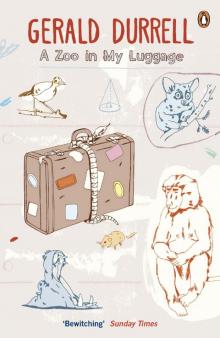 A Zoo in My Luggage
A Zoo in My Luggage The New Noah
The New Noah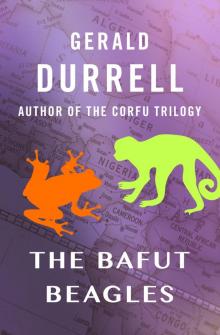 The Bafut Beagles
The Bafut Beagles Encounters With Animals
Encounters With Animals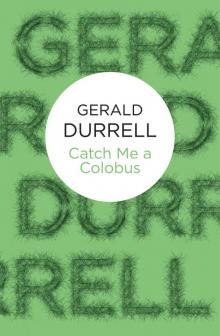 Catch Me a Colobus
Catch Me a Colobus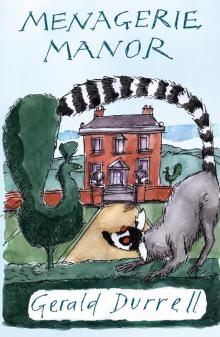 Menagerie Manor
Menagerie Manor The Picnic and Suchlike Pandemonium
The Picnic and Suchlike Pandemonium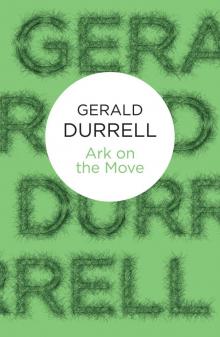 Ark on the Move
Ark on the Move My Family and Other Animals
My Family and Other Animals Two in the Bush (Bello)
Two in the Bush (Bello) The Stationary Ark
The Stationary Ark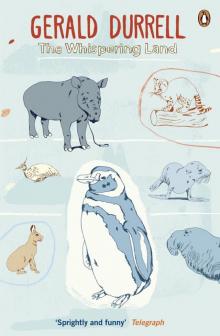 The Whispering Land
The Whispering Land Three Singles to Adventure
Three Singles to Adventure Fillets of Plaice
Fillets of Plaice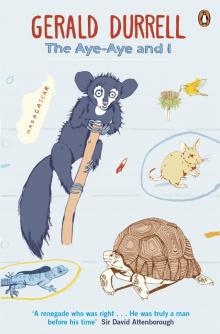 The Aye-Aye and I
The Aye-Aye and I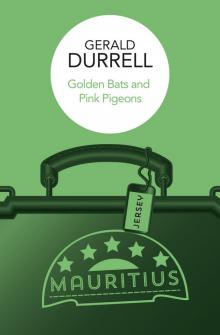 Golden Bats & Pink Pigeons
Golden Bats & Pink Pigeons The Drunken Forest
The Drunken Forest Marrying Off Mother: And Other Stories
Marrying Off Mother: And Other Stories The Corfu Trilogy (the corfu trilogy)
The Corfu Trilogy (the corfu trilogy)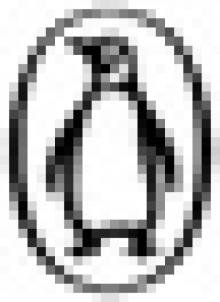 The Corfu Trilogy
The Corfu Trilogy Marrying Off Mother
Marrying Off Mother Two in the Bush
Two in the Bush